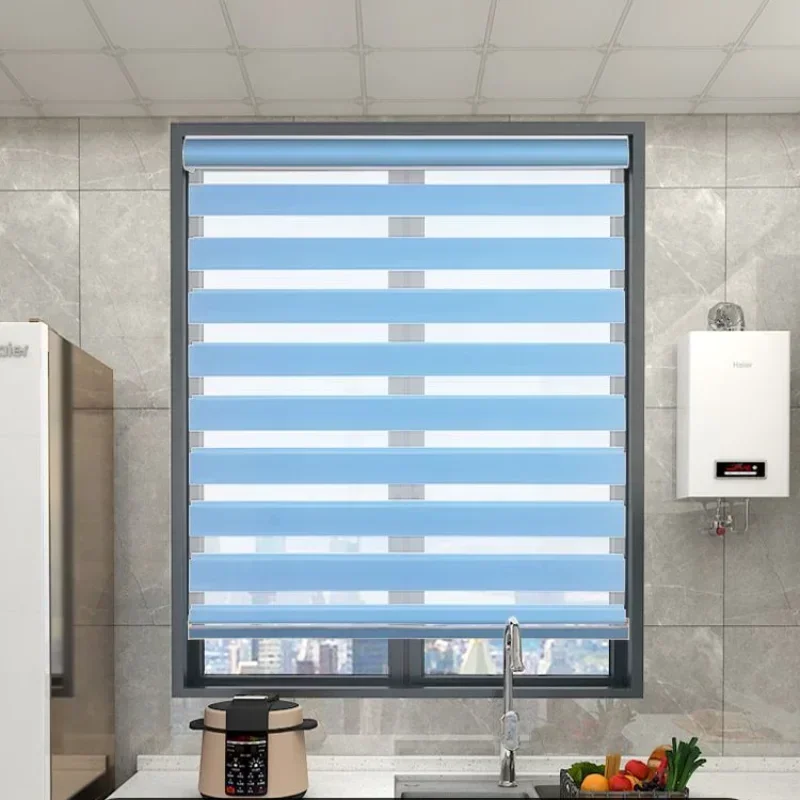Blinds are a common window treatment that adds style and functionality to any room. However, over time, the strings used to operate blinds can wear out or break, rendering them difficult to open or close. Instead of replacing the entire blind mechanism, you can often repair the string yourself with a few tools and some patience. This comprehensive DIY guide will walk you through the steps to fix blinds strings effectively, saving you time and money.
Understanding How Blinds Strings Work
Before diving into repairs, it’s essential to understand the basic mechanics of blinds strings. Most blinds operate on a pulley system where one string controls the raising and lowering of the blinds, while another tilts the slats to adjust light and privacy. These strings are typically threaded through a series of pulleys or guides within the headrail of the blinds. When you pull the strings, tension is applied to the blinds’ mechanisms, allowing them to move accordingly.
Identifying Common Issues with Blinds Strings
Several issues can arise with blinds strings over time. The most common problems include fraying or snapping of the string, which can occur due to regular use, excessive pulling, or exposure to sunlight and dust. Additionally, knots or tangles within the string can prevent smooth operation of the blinds. Understanding these issues will help you diagnose the problem accurately before proceeding with repairs.

Tools and Materials You’ll Need
To repair blinds strings, gather the following tools and materials:
- Replacement string or cord (preferably of the same thickness and material as the original)
- Scissors or wire cutters
- Needle-nose pliers
- Screwdriver (if necessary for accessing the blinds mechanism)
- Tweezers (optional, for handling small knots or tangles) Having these tools on hand will ensure you can effectively tackle any issues with your blinds strings.
Step-by-Step Repair Process
- Remove the Blinds from the Window: Start by taking down the blinds from the window to access the string mechanism more easily. Lay them on a flat surface where you have ample room to work.
- Inspect the String: Carefully examine the blinds string to identify the location and nature of the problem. Look for areas of fraying, knots, or breaks. Determine if you need to replace the entire string or if a simple repair will suffice.
- Replace the String (if necessary): If the string is severely frayed or broken, you’ll likely need to replace it entirely. Measure and cut a length of replacement string that matches the original. Use scissors or wire cutters to ensure a clean cut.
- Thread the New String: Begin threading the new string through the blinds mechanism, following the path of the original string. Use needle-nose pliers to help guide the string through small openings or pulleys. Take care to replicate the original string’s path to maintain proper functionality.
- Secure and Adjust Tension: Once the new string is in place, secure it at both ends of the blinds mechanism. Tie knots or use the provided clips or anchors to prevent the string from slipping. Test the blinds by gently pulling the strings to ensure they operate smoothly and without resistance.
- Reinstall the Blinds: After confirming that the repairs are successful, reattach the blinds to the window frame. Ensure they are securely mounted and operate correctly before finishing the job.
Tips for Preventing Future Issues
- Regular Maintenance: Periodically inspect the condition of the blinds strings and mechanism. Clean any dust or debris that may accumulate, as these can affect the strings’ operation.
- Avoid Excessive Force: Handle the blinds strings gently when opening and closing the blinds. Avoid pulling too hard or jerking the strings, as this can cause premature wear and breakage.
- Use Quality Materials: When replacing blinds strings, opt for high-quality replacement cords that are durable and resistant to wear. This will prolong the lifespan of your blinds and reduce the need for frequent repairs.
Troubleshooting Common Problems
Sometimes, the issue with blinds strings isn’t straightforward. If the strings appear intact but the blinds still won’t operate smoothly, check for obstructions within the headrail or pulley system. Dust, dirt, or small debris can accumulate over time and interfere with the strings’ movement. Use a vacuum cleaner or compressed air to clean out the inside of the headrail and pulleys. Ensure that all components are free from debris before testing the blinds again.
Dealing with Tangled Strings
If you encounter tangled strings, resist the urge to yank or pull forcefully. This can worsen the tangle or even cause the string to snap. Instead, gently untangle the knots using tweezers or needle-nose pliers. Patience is key here; take your time to unravel the knots without damaging the string further. Once untangled, smooth out the string and ensure it runs freely through the pulleys and guides.
Replacing Broken Components
In some cases, the issue may not be with the string itself but with a broken pulley or guide within the blinds mechanism. If you notice that the string is intact but the blinds still won’t move, inspect each component carefully. Look for cracks, bends, or signs of wear in the pulleys and guides. If necessary, replace any damaged components with new ones compatible with your blinds model. This step may require basic tools and a bit of DIY skill, but it can restore full functionality to your blinds.

Testing and Final Adjustments
Once you’ve completed the repairs or replacements, test the blinds thoroughly to ensure they operate smoothly. Raise and lower the blinds several times to check for any signs of sticking or resistance. Adjust the tension of the strings if needed to achieve the desired movement. Make any final adjustments to the string length or knot tightness to optimize the blinds’ performance.
Regular Maintenance Tips
To keep your blinds in top condition, incorporate regular maintenance into your home care routine. Dust the blinds regularly with a feather duster or a soft cloth to prevent dirt buildup. Inspect the strings and mechanism every few months for signs of wear or damage. Promptly address any issues to prevent further damage and extend the lifespan of your blinds.
Enhancing Longevity with Proper Care
Maintaining your blinds goes beyond just fixing strings. Regular care can significantly extend their lifespan. Avoid excessive exposure to sunlight, which can weaken materials over time. Dust blinds often to prevent dirt buildup that could impede functionality. Gentle cleaning with a damp cloth or vacuum attachment keeps them looking fresh without causing damage. By incorporating these practices into your routine, you’ll ensure your repair blinds remain both functional and aesthetically pleasing for years.
Knowing When to Seek Professional Help
While many repairs can be DIY, there are instances where professional assistance is necessary. If you encounter complex issues such as motorized blind malfunctions or structural damage, consulting a professional repair blinds repair service is advisable. They have the expertise and tools to handle intricate repairs safely and effectively, ensuring your blinds operate smoothly and securely.
Upgrading for Improved Functionality
Consider upgrading your repair blinds if repairs become frequent or if you desire enhanced functionality. Modern blinds offer features like motorization or remote control, making operation effortless and precise. Upgrading can also improve energy efficiency and provide better light control, enhancing the comfort and ambiance of your living spaces. Explore your options with reputable blinds suppliers or consult interior design professionals for guidance tailored to your needs.

Conclusion
Repairing blinds strings to open and close effectively is a practical DIY task that can extend the life of your window treatments. By understanding how blinds strings work, identifying common issues, and following a step-by-step repair process, you can save money on professional repairs or replacements. Remember to use the right tools and materials for the job and practice regular maintenance to prevent future issues. With these tips and techniques, you’ll enjoy smooth-operating blinds that enhance both the functionality and aesthetic of your home.








